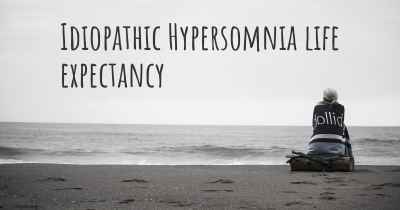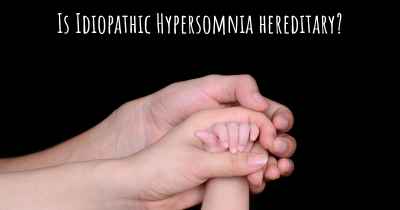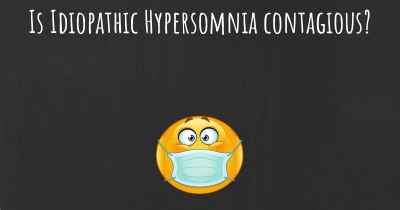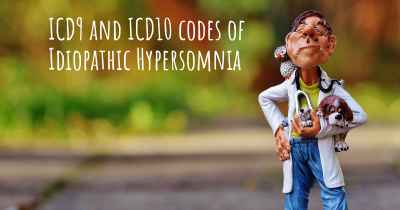What is the history of Idiopathic Hypersomnia?
When was Idiopathic Hypersomnia discovered? What is the story of this discovery? Was it coincidence or not?
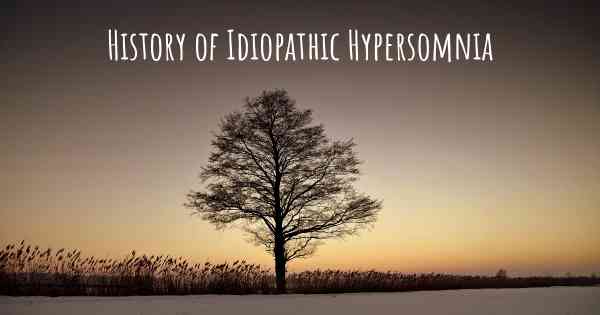
Idiopathic Hypersomnia (IH) is a neurological sleep disorder characterized by excessive daytime sleepiness (EDS) that is not caused by any known underlying medical condition. The term "idiopathic" means that the cause of the disorder is unknown, making it a challenging condition to diagnose and treat.
The history of Idiopathic Hypersomnia dates back to the early 20th century when it was first recognized as a distinct sleep disorder. However, it wasn't until the 1970s that researchers began to study and classify it as a separate entity.
In 1972, Dr. Bedrich Roth, a Czechoslovakian-born psychiatrist, published a seminal paper describing a group of patients who experienced excessive daytime sleepiness without any apparent cause. He coined the term "Idiopathic Hypersomnia" to describe this condition.
In the following years, researchers and clinicians started to investigate the characteristics and diagnostic criteria of Idiopathic Hypersomnia. They observed that individuals with IH experienced persistent sleepiness despite getting adequate sleep at night. Unlike other sleep disorders such as narcolepsy, IH patients did not exhibit sudden sleep attacks or cataplexy (loss of muscle tone triggered by emotions).
In 2001, the International Classification of Sleep Disorders (ICSD) recognized Idiopathic Hypersomnia as a distinct sleep disorder. This classification helped raise awareness among medical professionals and facilitated further research into the condition.
Over the years, researchers have made significant progress in understanding the underlying mechanisms of Idiopathic Hypersomnia. Studies have suggested that abnormalities in the central nervous system, particularly in the areas responsible for regulating wakefulness and sleep, may contribute to the excessive daytime sleepiness experienced by IH patients.
Genetics also play a role in Idiopathic Hypersomnia. Some studies have identified specific genetic markers associated with the disorder, indicating a potential hereditary component. However, more research is needed to fully understand the genetic factors involved.
Diagnosing Idiopathic Hypersomnia can be challenging due to the absence of specific diagnostic tests. Physicians rely on a combination of clinical evaluation, sleep history, and exclusion of other sleep disorders to make a diagnosis. Polysomnography (a sleep study) and multiple sleep latency tests (MSLT) are often conducted to rule out other conditions and assess daytime sleepiness.
Treatment for Idiopathic Hypersomnia focuses on managing the symptoms rather than addressing the underlying cause. Stimulant medications, such as modafinil and amphetamines, are commonly prescribed to help improve wakefulness during the day. However, these medications may not be effective for all individuals, and their long-term use can have side effects.
Lifestyle modifications can also play a significant role in managing Idiopathic Hypersomnia. Maintaining a regular sleep schedule, practicing good sleep hygiene, and avoiding substances that can disrupt sleep (e.g., caffeine, alcohol) can help improve overall sleep quality and reduce daytime sleepiness.
Research into Idiopathic Hypersomnia is ongoing, with scientists striving to unravel the underlying causes and develop more targeted treatments. Advances in neuroimaging techniques and genetic studies hold promise for a better understanding of this complex disorder.
In conclusion, Idiopathic Hypersomnia is a sleep disorder characterized by excessive daytime sleepiness without a known cause. While the disorder was first described in the 1970s, it wasn't until 2001 that it was officially recognized as a distinct sleep disorder. Ongoing research aims to shed light on the underlying mechanisms and improve diagnostic methods and treatment options for individuals living with Idiopathic Hypersomnia.
Posted Jun 6, 2017 by Candice 2150
Posted Jun 7, 2017 by Sarah 2050
